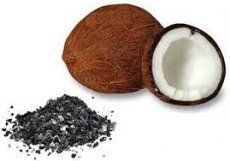New publications
Coconut charcoal can help store hydrogen safely and efficiently
Last reviewed: 02.07.2025

All iLive content is medically reviewed or fact checked to ensure as much factual accuracy as possible.
We have strict sourcing guidelines and only link to reputable media sites, academic research institutions and, whenever possible, medically peer reviewed studies. Note that the numbers in parentheses ([1], [2], etc.) are clickable links to these studies.
If you feel that any of our content is inaccurate, out-of-date, or otherwise questionable, please select it and press Ctrl + Enter.

Hydrogen is an environmentally friendly fuel. However, a number of problems prevent it from being put into use, in particular, the lack of an effective storage method.
In one of the latest studies, scientists have found that coconut contains a certain component that can help solve this problem.
Our planet has virtually inexhaustible reserves of hydrogen, as it is present in water. Also, when hydrogen is burned, water is formed, and absolutely no harm is done to the environment. Due to its properties, hydrogen can compete with motor fuel, which is obtained from fossil hydrocarbons.
However, for hydrogen to be able to fully replace other types of fuel, it is necessary to solve some problems. As already mentioned, scientists have not yet managed to create a sufficiently reliable and safe method of storing hydrogen, which has a low volumetric energy density, in other words, large-sized containers are required for storage.
Hydrogen storage itself is a separate problem. To reduce the density of the element, specialists tried the liquefaction method, but at -2500C the element begins to boil. To maintain the liquid state of hydrogen, powerful and voluminous thermal insulation is required.
Compressed hydrogen is also dangerous, and the technology has proven unsuitable for widespread use in vehicles, as accidents are not uncommon on the roads.
After the method of liquefying and compressing hydrogen proved ineffective, specialists decided to try chemical storage technologies. Experts selected various materials that could absorb hydrogen and then release it when needed.
First of all, specialists focused on metal hydrides, however, later a number of shortcomings were revealed. In order for the process of hydrogen release to begin, metal hydrides had to be heated, and this leads to irrational energy consumption, also the number of recharges of metal hydrides is limited and with an increase in recharges, capacity is lost.
At the Hydrogen Energy Center in India, Vini Dixinth and his colleagues made an interesting discovery. Research has shown that coconut charcoal can solve almost all hydrogen storage problems. Coconut charcoal can absorb hydrogen at a high level, and its performance is not affected by the number of recharges.
Carbon binds hydrogen well and releases it freely when needed. Carbon is also a good material for making porous materials with a high surface area.
Carbonization is one of the technologies for obtaining coconut charcoal with the required qualities. The technology is based on heating the raw material to several hundred degrees Celsius in a nitrogen atmosphere, which will preserve the carbon and its porous structure.
The project manager replaced the coconut shell with pulp, which had several advantages, in particular, it contains magnesium, potassium, sodium, calcium and other elements that are evenly distributed throughout the volume. According to experts, this feature of the nut pulp will allow it to bind a larger volume of hydrogen.
Despite the fact that the Indian specialists did not achieve practical results, but were able to develop a material that could be a good basis for a hydrogen storage system, they continue their work and have already determined the further path of research. Now the Indians have identified the dependence of the absorption properties of carbon on catalysts, which, in their opinion, is an important mechanism.
 [ 1 ]
[ 1 ]
